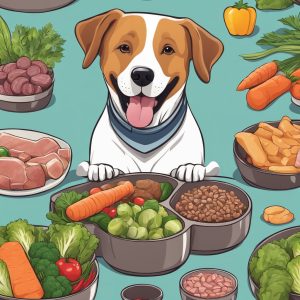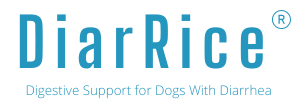Understanding a Raw Food Diet for Dogs

A raw food diet for dogs aims to mimic what canines would eat in the wild. This typically includes uncooked meat, bones, organs, and sometimes fruits and vegetables.
Raw diets often consist of raw meaty bones, muscle meat, organ meats, and some plant matter. The idea is to provide a more natural and nutrient-dense diet compared to commercial pet foods.
When considering a raw diet for your dog, it’s crucial to ensure it’s nutritionally balanced. This means including the right proportions of proteins, fats, vitamins, and minerals.
Key components of a balanced raw diet include:
- Muscle meat (70-80%)
- Organ meat (5-10%)
- Bones (10-15%)
- Fruits and vegetables (optional, 0-5%)
Raw feeding can influence your dog’s gut microbiome. Some studies suggest it may lead to a more diverse bacterial ecosystem in the digestive tract.
It’s important to note that transitioning to a raw diet requires careful planning. You should consult with a veterinarian or canine nutritionist to ensure your dog’s specific nutritional needs are met.
While some pet owners report benefits like improved coat condition and energy levels, raw diets also come with risks. These include potential bacterial contamination and nutritional imbalances if not properly formulated.
Health Benefits and Risks of Raw Diets
Raw diets for dogs can impact gut health and introduce potential contamination risks. Understanding these factors is crucial for pet owners considering this dietary approach.
Probiotics and Gut Health
Raw diets may positively influence your dog’s gut microbiome. These diets can promote beneficial bacteria growth in the digestive system. This can lead to improved digestion and nutrient absorption.
Probiotics naturally present in raw foods may enhance your dog’s gut health. These beneficial microorganisms can help maintain a balanced intestinal flora.
The shift to a raw diet might temporarily alter your dog’s fecal microbiota. However, this change may not fully replicate the microbiome of wild canines like wolves.
Potential Contamination and Bacteria
Raw diets pose risks of bacterial contamination. Salmonella and Listeria are potential threats in uncooked meat.
Proper handling and storage of raw ingredients are crucial. This helps minimize the risk of harmful bacteria affecting your dog’s health.
Be aware that dogs on raw diets may shed more bacteria in their feces. This could potentially impact human health through contact with pet waste.
Transitioning to a raw diet requires careful consideration of these risks. Consult with a veterinarian to ensure you’re making a safe choice for your pet.
Preparing for Dietary Change
Transitioning your dog to a raw food diet requires careful planning and professional guidance. It’s crucial to assess your dog’s current nutritional needs and consult with experts before making any significant changes.
Consulting Your Veterinarian
Before switching your dog to a raw diet, it’s essential to consult your veterinarian. Your vet can provide valuable insights into your dog’s specific health requirements and potential risks associated with dietary changes.
They can help you determine if a raw diet is suitable for your dog’s age, breed, and health condition. Your vet may also recommend blood tests to establish a baseline for monitoring your dog’s health during the transition.
Discuss any concerns about nutritional deficiencies or imbalances that might occur with a raw diet. Ask for guidance on proper food handling and storage to minimize the risk of foodborne illnesses.
Assessing Your Dog’s Current Diet
Evaluate your dog’s current kibble diet to understand its nutritional composition. This will help you create a balanced raw food diet that meets your dog’s specific needs.
Consider the following aspects:
- Protein sources and content
- Fat levels
- Carbohydrate content
- Vitamin and mineral profiles
Take note of your dog’s current weight, energy levels, and overall health. This information will serve as a baseline for comparing changes after transitioning to a raw diet.
Gradually introduce small amounts of raw food alongside the kibble diet. This slow transition can help prevent digestive issues like diarrhea that may occur with sudden dietary changes.
Transitioning to a Raw Diet
Switching your dog to a raw diet requires careful planning and observation. A gradual approach helps minimize digestive issues while allowing your dog’s system to adapt to the new food.
Gradual Transition Strategies
Start by introducing small amounts of raw food into your dog’s current diet. Replace 10% of their regular food with raw options, gradually increasing the proportion over 7-14 days. This slow transition allows your dog’s digestive system to adjust.
Mix the raw food thoroughly with their existing meals. Begin with easily digestible proteins like chicken or turkey. As your dog adapts, introduce a variety of meats, organs, and bones.
Consider using a commercial raw food to start, then transition to homemade if desired. This ensures proper nutrient balance during the initial switch.
Monitoring Your Dog’s Digestive Response
Observe your dog’s stool quality daily. Firm, well-formed stools indicate good digestion. Loose stools or diarrhea may occur initially but should improve within a few days.
Watch for changes in energy levels and coat condition. A shinier coat and increased vitality often signal successful adaptation to the raw diet.
Monitor your dog’s weight weekly. Adjust portion sizes if you notice significant weight changes. Consult your veterinarian if digestive issues persist or your dog shows signs of discomfort.
Keep a journal to track your dog’s progress. Note any changes in appetite, behavior, or health. This information helps you fine-tune the diet and identify potential sensitivities.
Managing Digestive Upsets During Transition
Transitioning your dog to a raw diet may cause temporary digestive issues. Recognizing symptoms early and using targeted digestive aids can help smooth the process.
Identifying Symptoms of Upset
Watch for signs of digestive distress in your dog during the diet transition. Diarrhea is a common issue, ranging from mild to severe. Look for changes in stool consistency, frequency, or color.
Vomiting or regurgitation may occur as your dog adjusts to new proteins. Pay attention to any loss of appetite or lethargy. Excessive gas or gurgling stomach sounds can indicate digestive upset.
Monitor your dog’s energy levels and coat condition. A dull coat or sudden weight loss may signal nutritional imbalances. If symptoms persist for more than 48 hours or worsen, consult your veterinarian.
Incorporating Digestive Aids
Support your dog’s digestive health with targeted supplements. Probiotics can help balance gut bacteria and reduce diarrhea. Choose a high-quality product designed for dogs.
Consider adding digestive enzymes to meals, especially if your dog struggles with the new proteins. Green tripe, rich in natural enzymes, can aid digestion and provide beneficial nutrients.
Bone broth can soothe the digestive tract and improve hydration. Start with small amounts and gradually increase. Pumpkin puree (plain, unsweetened) can help firm up loose stools.
Introduce new foods slowly, mixing them with your dog’s current diet. Gradually increase the ratio of raw food over 7-14 days. This gentle transition helps prevent digestive upset.
Ongoing Management and Consideration
Transitioning your dog to a raw diet requires ongoing vigilance and care. Regular check-ups and maintaining a balanced diet are crucial for your dog’s health and well-being.
Regular Veterinary Check-Ups
Schedule frequent visits to your veterinarian when transitioning your dog to a raw diet. These check-ups allow for monitoring of your dog’s overall health and detection of any potential issues early on.
Your vet can assess your dog’s weight, coat condition, and energy levels. They may recommend blood tests to ensure proper nutrient levels and organ function.
Be prepared to discuss any changes you’ve noticed in your dog’s behavior or digestion. If diarrhea persists, your vet may suggest further tests or dietary adjustments.
Keep a log of your dog’s meals and any symptoms to share with your veterinarian. This information can help identify patterns or triggers for digestive issues.
Maintaining a Balanced Diet
Ensuring a balanced diet is critical when feeding your dog raw food. Consult with a veterinary nutritionist to create a meal plan that meets all of your dog’s nutritional needs.
Include a variety of protein sources such as beef, chicken, and fish. Add organ meats for essential vitamins and minerals. Incorporate vegetables and fruits for fiber and additional nutrients.
Consider supplementing with calcium if you’re not feeding raw bones. Omega-3 fatty acids from fish oil can support skin and coat health.
Monitor your dog’s weight and adjust portion sizes as needed. Be cautious of overfeeding, as raw diets can be calorie-dense.
Rotate protein sources to prevent nutritional imbalances and reduce the risk of food sensitivities. Keep meals consistent in composition to avoid digestive upset.
Frequently Asked Questions
Transitioning dogs to a raw diet can lead to several changes in their digestive patterns. Understanding these changes and knowing how to manage them is crucial for pet owners.
Is it normal for a dog’s stool to change consistency after starting a raw diet?
Yes, it’s common for a dog’s stool to change when switching to a raw diet. The stool may become firmer and smaller due to the higher digestibility of raw food.
Some dogs might experience temporary loose stools during the transition period. This is usually not a cause for concern unless it persists for more than a few days.
How should one manage diarrhea during a dog’s transition to a raw diet?
If your dog develops diarrhea during the transition, slow down the process. Introduce the new diet more gradually, mixing it with the old food over a longer period.
Ensure your dog stays hydrated. You can also add probiotics or pumpkin puree to help firm up the stool.
What are the expected changes in stool color for dogs on a raw diet?
On a raw diet, your dog’s stool may become darker due to the higher meat content. It’s normal for the color to vary based on the specific proteins in their meals.
White or chalky stools can indicate too much bone in the diet. Adjust the bone-to-meat ratio if you notice this consistently.
How long typically does the adjustment period last for dogs switching to a raw diet?
The adjustment period can vary, but it typically lasts about 1-2 weeks. Some dogs may adapt quickly, while others might take up to a month.
Monitor your dog’s digestion and energy levels during this time. If problems persist beyond a month, consult with a veterinarian familiar with raw diets.
What are the general guidelines for feeding a dog with diarrhea who is on a raw diet?
If your dog experiences diarrhea on a raw diet, temporarily simplify their meals. Offer a single protein source and reduce fat content.
Fasting for 12-24 hours can help reset the digestive system. Reintroduce food slowly with small, frequent meals.
How frequently do dogs defecate when consuming a raw food diet and what is considered normal?
Dogs on a raw diet often defecate less frequently due to the higher digestibility of the food. Once or twice a day is typical.
The stools should be firm and well-formed. If your dog is straining or producing very small, hard stools, they may need more moisture in their diet.
